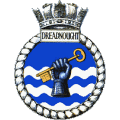All of the construction is now done. Right up to the end, though, this build still tasked me. The starboard accommodation stairs on the sides came apart after bending the steps up to be horizontal an then bending the stair sides. This shot was taken after positioning the steps back into shape before gluing the side on...

Because of the annoyance of this whole procedure, I left the steps alone on the port side. Being that they're vertical instead of horizontal, they don't look perfect, but at least they didn't come apart. I'll restate what I've been saying all along. This is NOT good PE. It's often too thin, comes apart easily during/ after bending, and doesn't have solid bend points.

Another big usage of time, was finishing the accommodation stairs gantries and cabling. Canvas covers go around the gantry sides and top. I made these out of receipt paper because that paper is thin, but strong, and works better than tissue paper. It was glued on with white glue. The actual stairs are lowered by cable attached to a davit. Because Fujimi doesn't give you these specific davits in plastic or PE, I improvised by using PE part B-17 on each side for the stairs davits, and had used the plastic parts where the other PE davits would normally go. This was then rigged with cable just as the real one would.
This picture shows the finished accommodation stairs and aft plank attached. The canvas will receive weathering as part of the final step with the clean canvas dirtied-up some.

Regarding rigging, I'll use the explanation from the thread on my Nachi, as it applies to all my ships...
I use fly fishing tippet which is a type of resin coated thread that will hold its shape and is very strong (lures are made out of this stuff). Now comes the voodoo. For my support rigging (funnels and masts) I use 6/0, which is .005 mm. For standard rigging, I use 8/0 which is .003 mm. Did you catch that? The higher number tippet corresponds to the SMALLER diameter. The stuff I use is called UNI-Thread. It's available in many colors (I have black, brown, and tan) and sizes and comes in 200 yards, which is more than enough.
To expand on this, I unravel a large amount of tippet from the spool so I won't have any issues with the spool colliding with the kit. I put a small spot of CA glue where the rigging will start (use a toothpick). After the CA has dried, I start to run the rigging to where it next needs to go (say, the top of a mast), put a dot of glue there to secure it, and so on. The nice thing about tippet is that thanks to the thin resin coat, it can be "shaped". So if your rigging has to hang loose and bow along a curve, just run your finger along to shape it before anchoring to the second point.
For items like the small insulators seen near the rigging connections, that's just a small dab of white glue that will congeal into a blob naturally and works pretty well. Then paint it when dry.
Regarding gluing PE, I use CA glue for all PE work. Usually Zap-A-Gap.
Here's a quick shot of the Kongo. She's all done with the exception of some paint touch up and final weathering to be done on Monday.

Here's a closeup of the midships area with rigging and flags...

And now to go into the final phase after a good night's sleep (it's 3:30 am as I write this). Barry, I hope this will be worth the wait!

 When finished, I'll create a MOD with much nicer pictures, and then it's the long process of collating all of this crazy stuff into the feature review article...
When finished, I'll create a MOD with much nicer pictures, and then it's the long process of collating all of this crazy stuff into the feature review article... 



 When finished, I'll create a MOD with much nicer pictures, and then it's the long process of collating all of this crazy stuff into the feature review article...
When finished, I'll create a MOD with much nicer pictures, and then it's the long process of collating all of this crazy stuff into the feature review article... 



 Pictures a little later.
Pictures a little later.













 Cheers
Cheers 


 . BTW, where can I pick up some on the UNI-thread that you're using.
. BTW, where can I pick up some on the UNI-thread that you're using.



























































 I hope you get back to your Hiryu build, I love watching your work
I hope you get back to your Hiryu build, I love watching your work 

